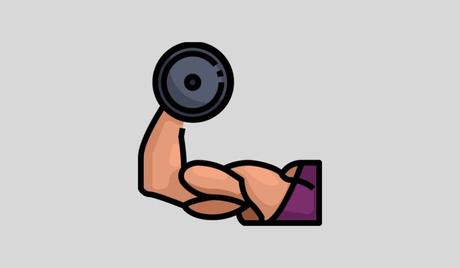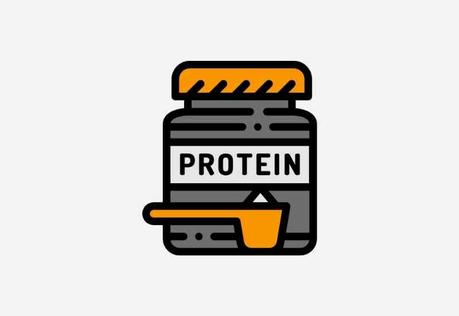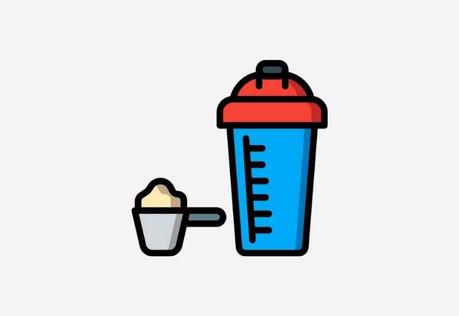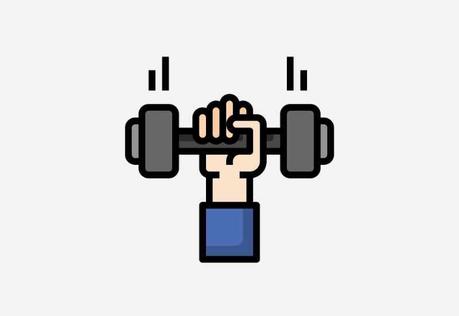Bulking up is a proven way for lifters to pack on muscle and strength. And yet, many struggle with doing it properly. Here are some science-backed strategies for how to bulk properly and effectively.

Bulking is a rite of passage for just about everyone who has walked into the gym.
The concept is simple: pad on some weight with a caloric surplus to build more muscle mass and strength.
But, like most things, it’s the execution where most lifters trip up.
(And let’s be frank, there is a heaping pile of Bro-ScienceTM out there that muddles people’s efforts.)
In this article, we will look at the science behind bulking effectively.
No more guesswork, no more overeating for the gainz, no more crashing from eating carbs like a donkey…
Just stone-cold muscle mass and strength.
Let’s jump right in.
1. Bust out your calorie calculator
Time to get your math hat on.
In order to bulk up effectively, it’s crucial to sit down with a calorie calculator (the Mayo Clinic has a free one online here) and see what your daily calorie needs are.
For me, a relatively active 40-year-old, my daily maintenance calorie intake is 3,000 calories. Your caloric needs will vary by height, weight, activity level, and so on.
Once you have your daily maintenance calorie count in hand, it’s time to add some calories.
Aim to add 10-20% of calories to your diet.
In my case, this would be an additional 300-600 calories per day.
Added calories should be spread out across new protein, carbs and fats.
2. Bulk sustainably
One of the appealing aspects of bulking is the feeling that the guardrails are off with what we can eat.
But that’s not really the attitude you should take with bulking.
I’ve watched friends go all-in on this “freedom,” piling on a ton of weight rapidly. When you can guilt-free eat like a donkey, downing handfuls of treats, snacks and excess calories, it’s not hard to see how this could go wrong.
When it comes to doing a “hyper-energetic diet”—aka bulking—properly, research1 shows that aiming no more than 0.25-0.5% of bodyweight per week.
For a 150lb person, this would result in a weekly weight gain of 3.75 to 7.5lbs.
Starting with a more modest caloric increase in the first week will give you a better idea of how quickly your body is going to put on weight.
One of the best ways you can stay on top of your diet is with a food journal. There are a lot of benefits to journaling your meals, from keeping you honest about calorie counts to staying on top of macros.
3. Eat lots of protein.
Unlike fats and carbohydrates, protein is almost universally appreciated and adored.
Protein is essential for building muscle and strength.
Protein promotes muscle mass2, increases strength3, and helps your body recover more quickly4.
However, one oopsie-doopsie effect getting lots of protein is that you will feel fuller5.

Which can make bulking difficult as protein reduces hunger by decreasing the amount of ghrelin flowing through your body.
One solution is to supplement with a good whey protein, which is “easy” calories and protein because it is in liquid form.
Additionally, remembering that protein can help satiate you is helpful to know when doing a cutting phase or when in a caloric deficit.
4. Eat more meals
For some, one of the challenges of bulking up is getting an adequate number of calories consistently.
Feeling full all the time isn’t a great way to live.
Instead of piling on a second serving at lunch and dinner, spread out the meals.
Bulking vs. Cutting: Pros, Cons, Differences and How to Get Started with Both
Add a second meal between breakfast and lunch, and then another mini-meal between lunch and dinner.
Additionally, mix in some protein with each of your “bonus” meals, as there is evidence that distributing protein intake over the course of the day increases the body’s ability to synthesize protein1.
5. Plan to bulk for two months or longer
The amount of time you spend bulking will vary according to a few different things, from how well you are training (and recovering) to how well-trained you are.
Ultimately, the goal with a bulk is to pack on muscle and strength.
So how long does it take to start putting on the muscle?
One study1 found that increased lean muscle tissue can be noticeably detected after just seven sessions in the gym.
However, these differences in muscle size were small and only observable with an ultrasound.
(But, it’s a reminder that just because you can’t always feel progress, doesn’t mean progress isn’t happening!)
To achieve noticeable improvement in muscle mass takes around two to three months of consistent strength training1,2.
In other words, aim to do a bulk phase of at least two months in order to get maximum benefits and gains.
6. Supplement like a pro
Supplements and the Gym Bro lifestyle go hand in hand.
And the supplement industry as a whole does have a fairly earned reputation for being not-awesome at times (protein spiking, mislabeling ingredients, dirty manufacturing facilities resulting in failed drug tests, and on and on).
But using a trusted supplement company can do wonders when trying to bulk up.
The main ones to consider when packing on meat include:

Creatine. One of the most widely studied supplements on the planet, creatine has been shown to speed up the growth of muscle mass1, improves recovery2, and promotes more strength and explosive power3. It’s also exceptionally safe4.
Whey protein. Getting all of your daily protein needs in a bulk can be tough, given that protein makes you less hungry. Whey protein, which studies1 show that it’s better for muscle growth compared to other proteins like casein or soy, is a great way to keep your protein macros on point.
Dedicated bulking stack. If you really want to go all-out with your bulk, there are plenty of full stack supplement options for promoting maximum muscle growth and recovery. CrazyBulk’s Bulking Stack (reviewed here) is one of my favorites, but there are plenty of other options out there by trusted supplement companies.
While supplementation won’t replace training mindfully and getting lots and lots of sleep, it can help accelerate your progress.
7. Train according to your goals in the gym
Okay, so now that we have a plan for calories, some solid supplements in our shaker cup, and an idea of how long things are going to take, it’s time to train with purpose.
For pure muscle building, in the gym you want to perform 3 sets of 8-12 repetitions.
Lift with control so that you can extend the amount of time the muscles are under tension.
More tension, more muscle damage, and eventually, more muscle growth.

For power athletes, we are going with a lower rep count but higher weight, performing 3-5 sets of 2-5 repetitions.
This type of training is very challenging on the central nervous system, so take lots of rest between sets and get a TON of sleep between workouts to maximize recovery.
During a bulk phase you can still do 2-3 sessions of cardio per week to maintain hearth heath (just maybe avoid doing long, extended bouts of it each day, mmkay?).
For athletes, this is crucial as aerobic capacity is kinda important for sustaining performance on game day, so don’t stress that you are going to destroy the bulk “gains” by doing some aerobic activities.
How to Bulk Fast — FAQs
How fast should you gain weight in a bulk?
Sustainable bulking means that you are gaining between 0.025 and 0.05% of your bodyweight on a weekly basis.
For a 200lb individual, this is between 5-10lbs.
By having a caloric intake 10-20% over your daily maintenance calorie levels you will be able to gain weight relatively quickly without shocking hormone levels in your body.
Can you bulk up without putting any fat on?
Bulking and cutting at the same time—also known as “body recomposition”—is the unicorn of the weightlifting world.
The ability to be able to be in a caloric deficit (losing weight) while adding muscle is something we’d all love to be able to consistently do.
For well-trained individuals, being able to do this is rare and typically would require some use of androgenic aid (aka steroids).
But for those who are untrained or obese, body recomposition is actually quite common10.
Because the untrained or the overweight are out of shape, the novelty of strength training paired with a reduced caloric intake gives them that much-vaunted two-for-one effect.
The Bottom Line
The bulking phase, especially for those new to the concept, can be a little overwhelming.
There are a few considerations to take into, err, consideration when starting out—daily caloric maintenance levels, properly balancing macros, and supplementing correctly.
But once you start to see the weight pack on, and the muscle size and strength accelerate, things start to get a little more clear.
Take these tips, apply them to your next bulking phase, and pack on the meat!
More Articles and Guides Like This
Crazy Bulk: The Ultimate Bulking Stack? [Full Review]. Wondering if the CrazyBulk Bulking Stack is an effective way to bulk up and increase muscle mass? Read on for a full and detailed review of this clinically-proven stack and see if it’s right for you.
D-Bal Review: Pros, Cons and What You Should Know Before Buying. Wondering if D-Bal is an effective muscle building supplement for you? Here’s a full review of this popular steroid alternative, including ingredients, effectiveness, and much more.
